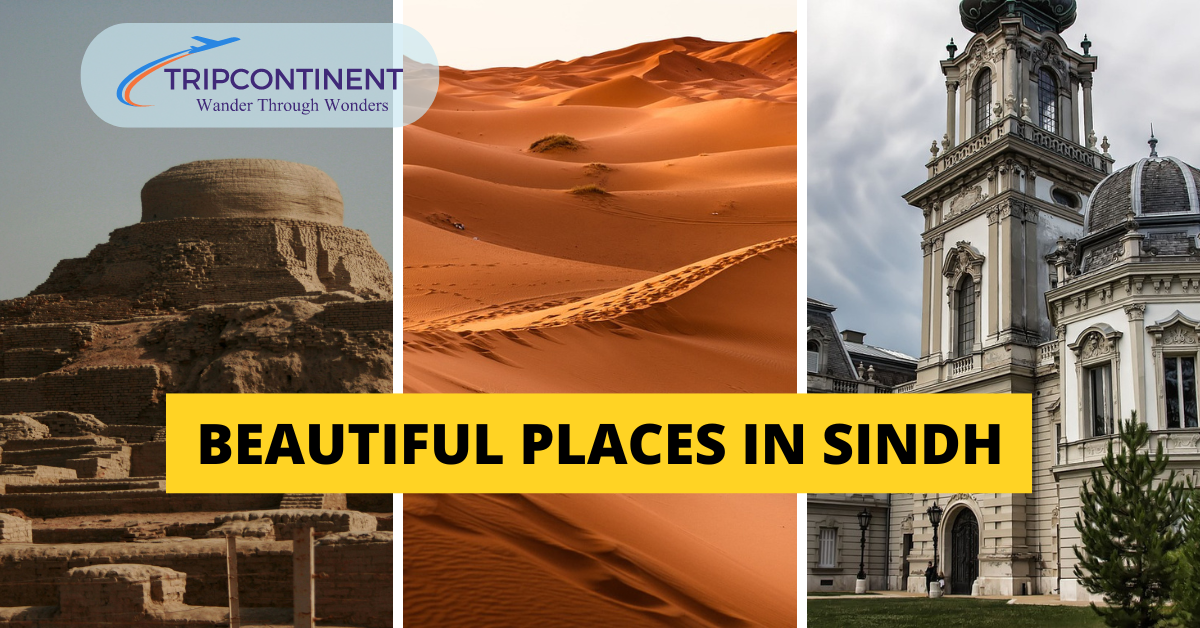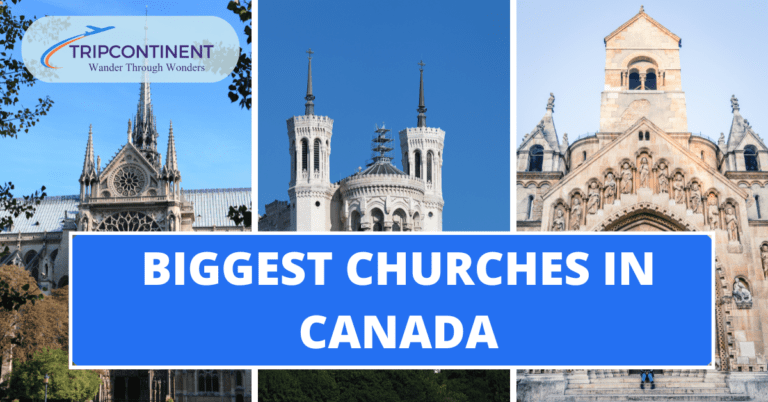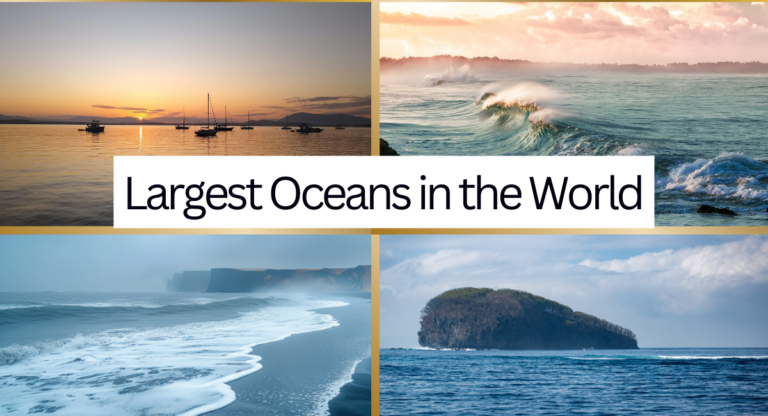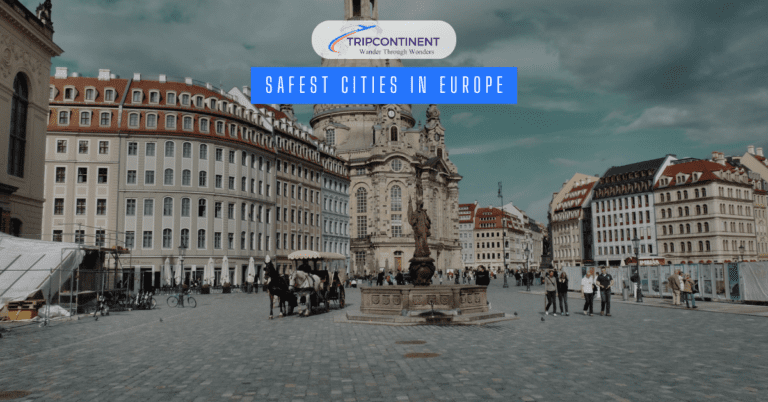Discover the 11 Most Beautiful Places in Sindh in 2024
Sindh, the province of Pakistan, is renowned for its rich cultural tapestry, contemporary with the ancient civilizations of Egypt and Mesopotamia. The province got its name from the Indus Delta River, which is familiar in Pakistan as the “Sindhu.”
The diverse geography of Sindh includes the plain fields, the Kirthar Mountains in the west, the Arabian Sea to the south, and the desert landscape in the southeast, distinguishing it from the rest of the country’s parts. This must-see province is a major exporter of fruits and vegetables and is also declared as the richest in natural resources of gas, petrol, and coal. Beyond the cultural richness, this Pakistan province offers a variety of tourist sites, attracting tourists worldwide. Two famous attractions Mohenjo Daro and Monument at Makli are declared as UNESCO World Heritage sites, lie in Sindh.
Let’s delve deeper to explore more about top tourist spots in Sindh, which may be worth adding to your dream destination.
List of the Top 11 Beautiful Places in Sindh
Here is the list of the most beautiful places in Sindh that you must visit.
- Mohenjo-Daro
- Thar Desert
- Mohatta Palace
- Gorakh Hill Station
- Turtle Beach
- Kort Diji Fort
- Keenjhar Lake (Kalri Lake)
- Ranikot Fort
- The Shrine of Shah Abdul Latif Bhittai
- Shah Jahan Mosque, Thatta
- Kirthar National Park
1. Mohenjo Daro
When talking about Pakistan’s most historical places, Mohenjo Daro won’t be neglected. The word Mohenjo Daro refers to the “Mound of the Dead.” This ancient site was unknown over the 3700 years and now has become a must-visit place in the country. Built in 2500 BCE, the historical place is situated in the Larkana District of Sindh, Pakistan. The building signifies the settlement of the ancient Indus Valley Civilization. The site gained popularity for the art, which includes trading seals like the Pashupati Seals, the Sculptures likewise the Priest-King, and the Dancing Girl. The Indus Valley Civilization had declined in the second millennium B.C.E. and the Harappans took the step of abandoning their cities including Mohenjo Daro.
It was rediscovered in the 1920s, one year after the discovery of Harappa. Later the archeological site was declared as a UNESCO World Heritage Site in 1980. While spreading over an area of 300 hectares, the ancient site beautifully represents how the cities and civilizations started in South Asia.
The place was home to secret code writers, who used to write on seals and left pieces of puzzles for future generations. Step forward to visit one of the world’s famous historical places to explore more about how the ancient folks lived and what their community was like.
Best Time to Visit: November to March
2. Thar Desert
The Thar Desert is an arid region of rolling sand hills, located partly in the Rajasthan state of southwestern India, and partly in the Punjab and Sindh provinces of eastern Pakistan. It is an exciting destination for tourists all over the world that requires a seven-hour drive from Karachi. While covering nearly 68,000 km area, this region of Sindh comprises Thar, Nara, and Kohistan.
It mainly sprawls in the Tharparkar district and extends southwards along the Rann of Kutch. Approximately, 85% of the Thar Desert lies in India, and the remaining 15% is in Pakistan. The total land area of this magnificent sand land spans over 238,254 square kilometers.
This Desert is commonly known as the Cholistan or Rohi Desert in Bahawalpur, as well as the “Pat” or “Thar Desert” in Sindh. Renowned as the largest desert in Pakistan, and only the subtropical desert of Asia, it is a must visit destination for visitors. It doesn’t end here, Thar Desert has a crown for being the 16th largest desert on the Earth planet and the third largest in Asia.
The green landscape after rain, beautiful sunsets, and colorful saris combine together to present its picturesque scenery. From breathtaking views of Karoonjhar mountains and vibrant villages to the historical sites and fascinating heritage, this arid region is full of charming surprises, encompassing some hidden jewels to be explored.
Prepare yourself for extreme walks, some hiking, and trekking as well, before coming to this sandy area.
Best Time to Visit: March to May & September to October
Read Also: Which Are the Most Beautiful Places in KPK
3. Mohatta Palace
Mohatta Palace, a jewel in Pakistan’s heritage, has been extensively remodeled. The ancient building is known for its arresting character and distinct and unusual color. It was built in 1927 in the posh seaside locales of Clifton, situated in Karachi, Sindh Province of Pakistan. Designed by Ahmed Hussain Agha, the building showcases a unique combination of pink Jodhpur stone with the local yellowstone, representing the similarity to the stone palaces of Rajasthan.
While spreading over an area of 18,500 sq ft, the building comprises windows, stone brackets, spandrels, domes, exquisite railings, and balustrades with floral motifs. It is a historical gem that beautifully aligns with the unique architecture that aspires to become a museum of international standing and a beacon of hope.
Best Time to Visit: November to February
4. Gorakh Hill Station
Gorakh Hill Station is one of the few beautiful places in Sindh, Pakistan. The hill station is 5,688 feet high from sea level, and is renowned as the “Murree of Sindh.” Locating on the highest plateau of the Sindh, and spanning over 10 square kilometers, the place is well known for its vibrant nightlife. People love to visit this place to experience the awesome view of stars at night with bonfires. You can book a room in a hotel for a convenient stay or tie up your camp to the breathtaking view at midnight.
This impressive hilly area is far away from Karachi approximately 423 km. Gorakh Hill Station is the only place in Sindh that has snowfall in winter season. If you’re outbursting from Karachi’s heatwave, head towards this hill station and get relaxed in its serene environment.
This hill station is attractive to nature enthusiasts, owing to its temperate weather and beautiful surroundings. The temperature falls below 20 °C in summers, while it remains sub-zero during winters.
Best Time to Visit: February to March
5. Turtle Beach
Turtle Beach, a nesting ground specifically reserved for endangered Green Sea Turtles, is located between Hawkay’s Beach and Sandspit in Karachi, Sindh. The beach provides a chance to witness these magnificent creatures in their natural habitat. The sand along the shoreline represents the gentle golden hue, showcasing the turquoise water of the sea.
Several amenities including lifeguards, accessible bathrooms, and a dog-friendly environment are available to facilitate visitors. You can simply sit to observe the turtle nesting activities, swimming, beachcombing, or go for a walk to enjoy the lively atmosphere of Karachi.
Explore amazingly designed huts at the beach, each offers standout features like cleanliness, and luxurious living environment. This naturally sandy beach with no rocks and reefs is a very famous tourist and picnic spot in Karachi. Get ready for a seaside escape, and have a soothing experience with your families and friends at this tranquility filled beach.
Best Time to Visit: March to October
Read Also: Which Are The 6 Famous Rivers In Pakistan?
6. Kot Diji Fort
Kot Diji, a small town in Khairpur city, houses the mammoth fort right smack on the highway. Kot Diji Fort, also known as Ahmedabad Fort, is a sight to behold that represents an 18th-century marvel. Approximately 25 miles east of the Indus River, the fort sits above a pre-Harappan Civilization archeological site, dating from 2500 to 2800 B.C.E. It was constructed in ten years, from 1785 to 1795. The iconic structure of the fort is surrounded by outer walls, standing 30 feet in height, and covering a boundary of about 1.8 km. This magnificent building includes a water reservoir to fulfill the need for portable water in the region.
This ancient fort was declared as a country’s protected heritage site by the Pakistani government. Come and explore every nook and cranny to know more about the ancient culture, and old civilization.
Best Time to Visit: October to February
7. Keenjhar Lake
Keenjhar Lake, Pakistan’s second-largest freshwater lake, has been declared a Ramsar site and a wildlife sanctuary. Located about 36 km away from Thatta City, the lake serves as an important source of drinking water for residents of Thatta District and Karachi City.
Despite holding great significance as a fresh drinking source, Keenjhar Lake houses a variety of Indigenous and migratory bird species such as ibises, flamingos, ducks, geese, herons, terns, coots, egrets, and seagulls. Seafood enthusiasts can get an abundance of fresh catches while adventure lovers may indulge in several activities including swimming, kayaking, and jet-skiing.
Best Time to Visit: October to March
Read Also: A Journey Through the Tallest Buildings in Pakistan
8. Ranikot Fort
Ranikot Fort is a conventional tourist path in Pakistan, situated in the Jamshoro District in Sindh. Commonly known as “The Great Wall of Sindh” is a captivating and mysterious destination, dating back to the 19th century.
Boasting approximately 32 km circumference, the fort’s exterior is adorned with semi-circular bastions. The strategic placement of these bastions, along the fortification walls, enhances the visual appeal of this ancient building. The Pakistan National Commission nominated the Ranikot Fort for UNESCO World Heritage status in 1993. Still, it has been on the tentative list of UNESCO World Heritage Sites.
There’s a small residence for the ruling family “Mirs”, lying within the border walls which is about five to six miles into the journey. The defensive walls cover the three sides of the fort, while the northern side is concealed by towering hillocks.
Best Time to Visit: October to March
9. The Shrine of Shah Abdul Latif Bhittai
Shah Abdul Latif Bhittai was a Sindhi Sufi mystic and poet, who gained popularity for being a great poet of Sindhi language. The shrine of Shah Abdul Latif Bhittai stands in the town of Bahit Shah, Sindh province of Pakistan. This Sindhi Sufi scholar used to narrate his message for mankind in the Sindhi language and became one of the world’s most famous poets.
Every corner of the shrine is intricately adorned and represents a spectacular look, attracting tourists to know more about the saint. If you’re planning to visit Sindh, visit this amazing place to
Best Time to Visit: September to April
Read Also: Which Are the Most Beautiful Places in Karachi
10. Shah Jahan Mosque, Thatta
Shah Jahan Mosque is one of the significant monuments of the Shah Jahan period in Sindh, built between 1644 to 1647 AD. It is a 17th-century building, serving as a central mosque for the city of Thatta. Commonly this magnificent place is known as the Mansoor Jahan Mosque, as well as the Jamia Masjid of Thatta.
The geometric brickwork and elaborate tilework signify the Mughal Emperor Shah Jahan was heavily influenced by Central Asia architecture.
The mosque’s prayer hall looks like a crown jewel, boasting a vibrant blue, and magenta tiles, which create an enchanting environment. This majestic building comprises 100 domes that interiorly exhibit a beautiful mix of complementary hues, several arches, and geometric masonry patterns, drawing tourists to unveil its adorned and unique features.
Best Time to Visit: October to March
11. Kirthar National Park
Kirthar National Park is a vast rugged national park in the south-west of Sindh, Pakistan. Built-in 1974 and stretching over an area of 3,087 kilometers square, it was declared as the country’s third-largest national park. The authorities emphasized that Kirthar park is a first-class refuge for fauna such as leopards, wolves, chinkara, gazelle, and Sindhi ibex.
Famous as a wildlife reserve in Sindh, this place has a remarkable history of supporting a diverse array of creatures. The park houses 33 species of mammals, 147 species of birds, and 10 reptile species. It is a great place for those who love to explore wildlife.
Best Time to Visit: November to March
Conclusion
Sindh offers a dynamic blend of modern and ancient culture, along with the perk of natural beauty. Situated in the southeastern part of Pakistan, it is the third-largest country’s province by land area and the second-most populous province, after Punjab. Sindh is also home to two Unesco World Heritage Sites that include the Historical Monument at Makli, and the Archeological Ruins at Mohenjo Daro. This Pakistani province has an agriculture-based economy and produces fruits, consumer goods, and vegetables.
Despite the cultural and historical significance, Sindh houses several tourist attractions that draw people from all across the globe. From Mohenjo Daro to Mohatta Palace, Turtle Beach, Ranikot Fort, and Shah Jahan Mosque, each destination provides a unique combination of cultural history and the beauty that lies in it.
FAQ’s
What Is the Most Famous Place in Sindh?
Sindh has numerous famous places, of which Mohenjo Daro, Gorakh Hill Station, TDF Ghar, Empress Market, Tooba Mosque, Rani Kot Fort, and Boat Basin come at the top.
Which Is the Most Beautiful City in Sindh?
Sehwan is one of the most beautiful cities of Sindh, popular for its enchanting atmosphere and the shrine of Lal Shehbaz Qalandar.
What Is Special About Sindh?
The picturesque landscape, diverse cultural heritage, and historical significance make the province more significant than the remaining three.
How Many Historical Places Are in Sindh?
It has nearly 3000 sites and monuments and has become a hub for preserving ancient cultural history.
What Is the Coldest Part of Sindh?
Typically the region near Gorakh Hill Station experiences cooler temperatures, due to its location near the Kirthar Mountains. It ensures a pleasant escape from the usual warmth of the Sindh region.

I’m Sophia Jones, an adventurer at heart from New York City, USA. I live for travel and exploration, always eager to discover new places, meet fascinating people, and try out diverse cuisines. Over the past few years, I’ve traveled to numerous countries, immersing myself in different cultures and creating unforgettable memories.






